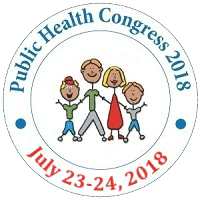
Muhammad Sarwat Mirza
Health and Nutrition Development Society, Pakistan
Title: Improving access is the key for sustainable adoption of birth spacing practices in rural remote areas
Biography
Biography: Muhammad Sarwat Mirza
Abstract
Statement of the Problem: Over last many years contraceptive prevalence rate in Pakistan is slightly improved but the situation in rural areas are unchanged. The high population growth rate, poor maternal and child health indicators are the main challenges affecting the economic status of the families and the country. In rural remote areas, access to quality care services, availability and sustained supplies of contraceptives are the major hurdles.
Methodology & Theoretical Orientation: For improving access to birth spacing services, an innovative approach was introduced. 600 female community-based workers, in under-served areas were selected and trained. They did the community mobilization and facilitated the assigned female health care providers (LHVs) for provision of birth spacing services within their communities. The government health and population welfare departments were involved as a partner to provide FP products and other FP services to referral clients. The data of Married Women of Reproductive Age (MWRA) was collected and maintained. The same data was used to generate new clients and for their follow up. The data was regularly followed/checked, validated by monitoring and back check at various levels.
Findings: Female workers registered all married women of reproductive age in their catchment population and collected socio-demographic information about the women and families. Majority of the women (95.8%) are illiterate. Average number of children is 4.3 and average age of youngest child is 1.8 years. Out of these women, only 4.5% were current users of FP, 3.8% are ever users and 91.7% are never users. In the intervention (24 months period), female workers reached 98.5% of the target women, deliver messages and information through group meetings and follow up on home visits. Supervisors LHVs provided birth spacing services through mobile clinics in each village. 46% of the women adopted one of the contraceptive methods for birth spacing. The trend of contraceptives by methods is condoms 13%, oral pills 20%, injectable 46% and IUCD 21%. The most encouraging thing in the pattern is the adoption of modern contraceptive methods and mostly long term. It reduces the cost and exposes the clients to lesser side effects and provides more durable and sustained birth spacing.
Conclusion & Significance: In rural remote areas, the improved access to the continued birth spacing services and commodities through community based female workers and supervisors trained LHVs for clinical services may be one of the effective and sustainable approach for bringing sustainable behavior change for adoption of birth spacing as a health behavior. These effects largely in reducing the economic burden on the family and contributed in national economy by reducing the DALYs.

